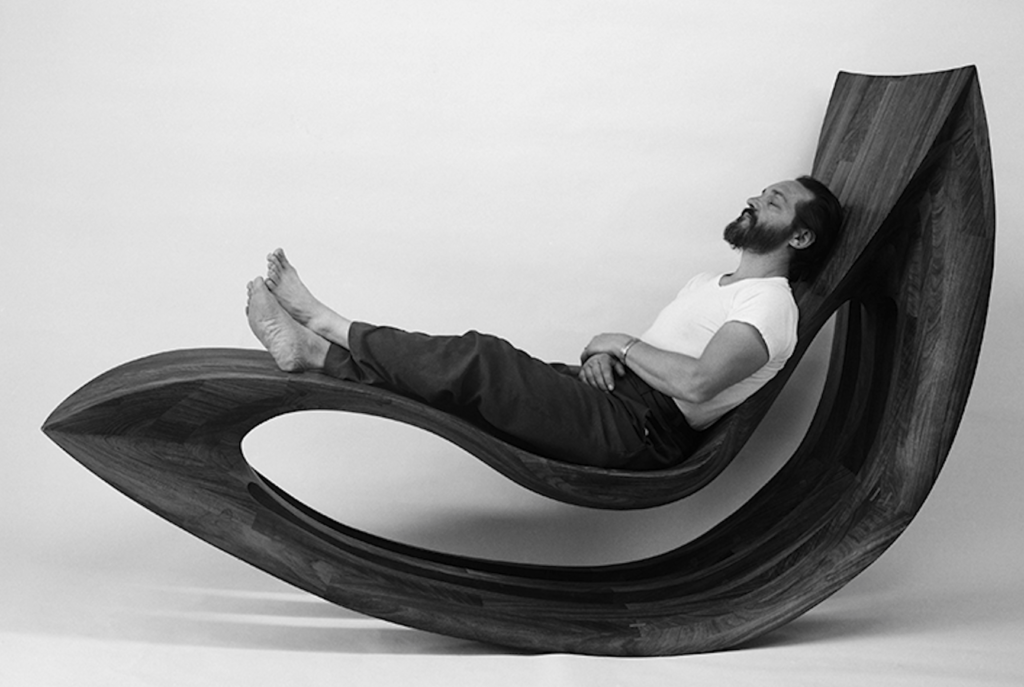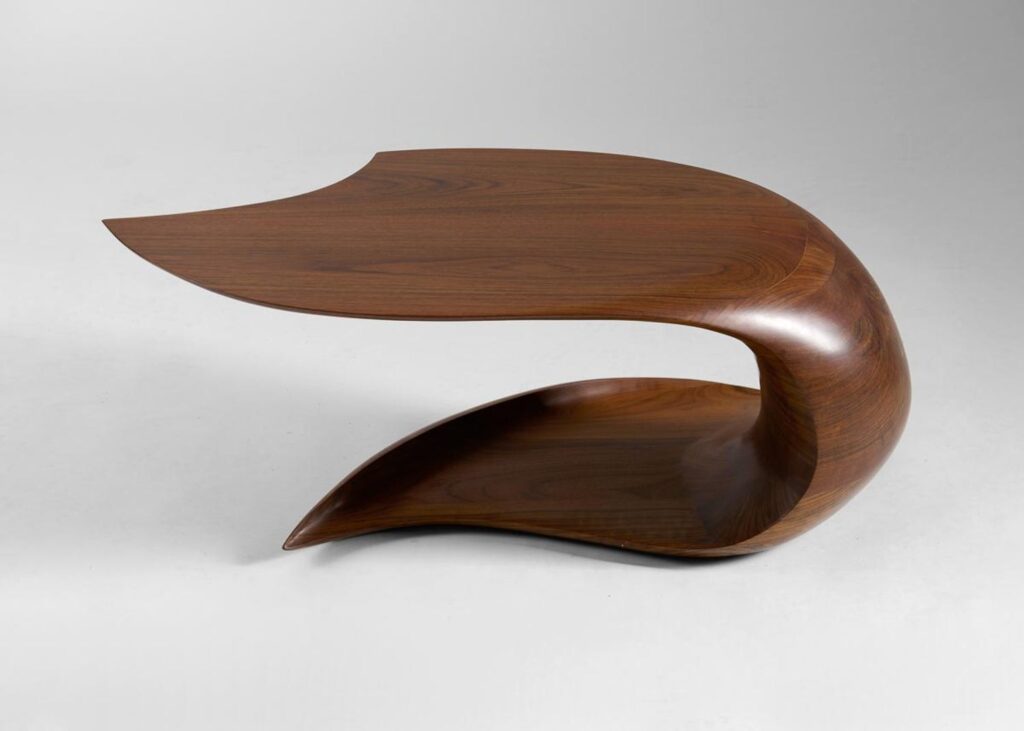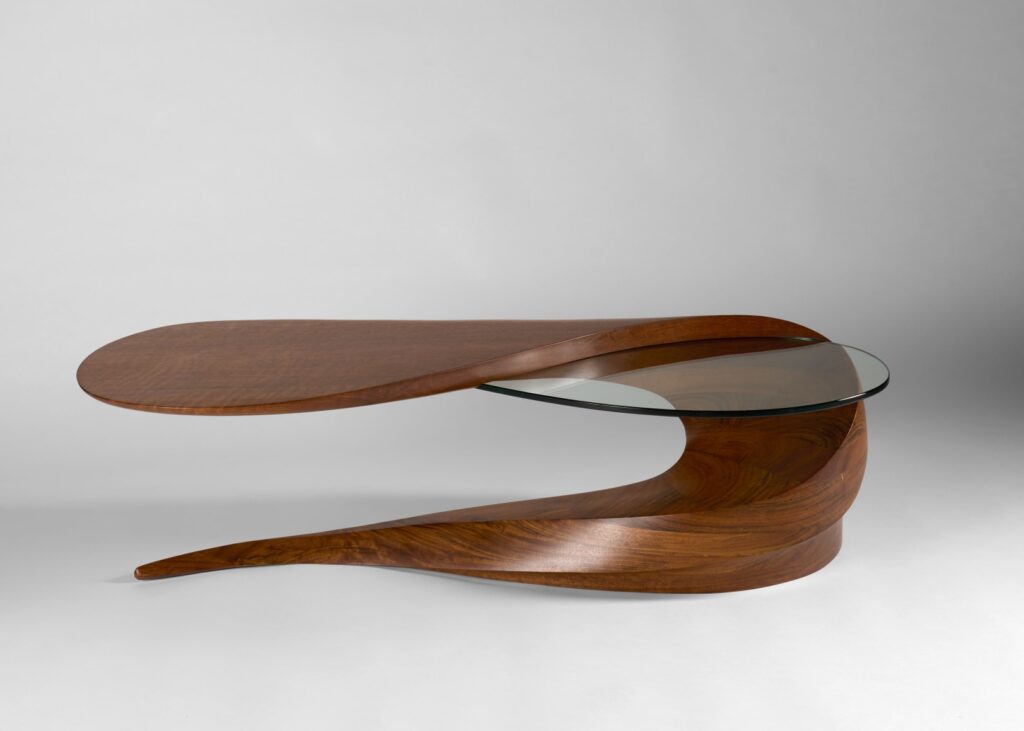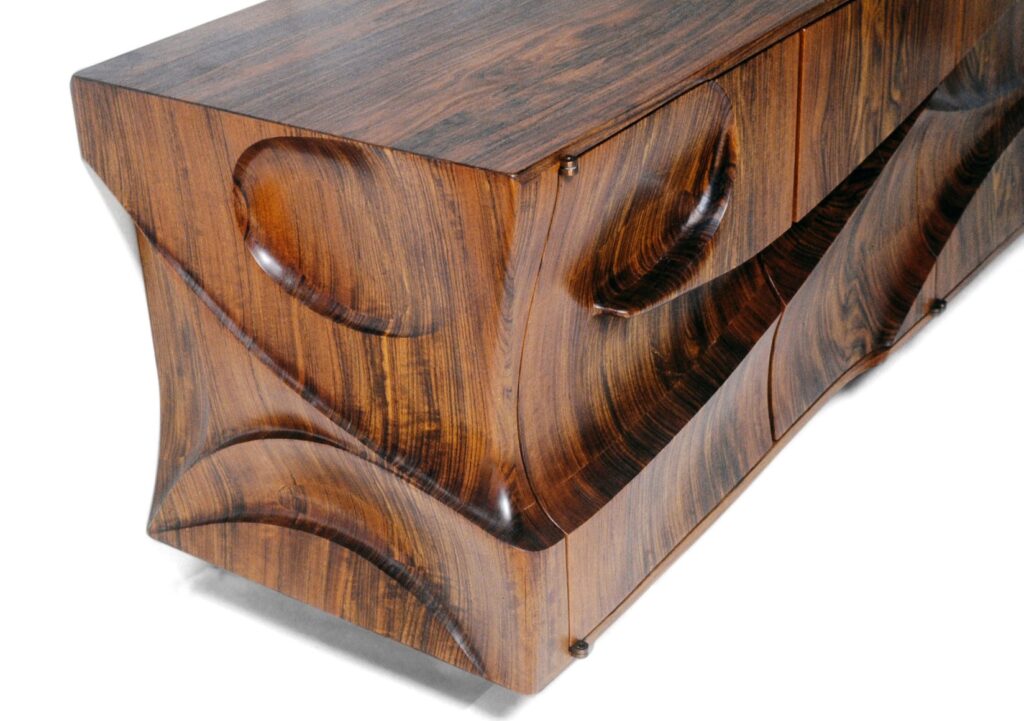
I am writing this is in memory of Michael Coffey, the last giant of the postwar American Studio Furniture Movement, who passed last week at the age of 96. Coffey was a maker who described himself as a sculptor who makes “art in wood.” He has made his name through his exquisite, sleek, sculptural, and asymmetrical forms crafted in wood, which under his hands became personal and unique pieces of furniture. Coffey contributed to crafts in design like very few have by abstracting nature through his own voice and forging his own personal style. “Being a perfectionist,” he used to say, “I am seldom satisfied with what I am given, so I came to the conclusion that, as inspirational as nature was, it can be improved upon. We can abstract that curving line, simplify that undulating surface and create forms which are even more exciting.”
Coffey started his career as a professional woodworker in the 70s at the height of the Studio Movement, which had swept America in the 60s. This movement came to propose an alternative to industrial design in all mediums (wood, metal, clay, glass, fiber) with exquisite representations of modernism, all crafted in studios. He belonged to a generation of giant woodworkers—such as George Nakashima, Sam Maloof, and JB Blunk, just to name a few—who sought to move design into the handmade during that consumer-era when the mainstream adopted standardization, placing modern design in a new transitional era and celebrating craftsmanship.
Born and bred in New York City, Coffey was a social worker who turned his hobby into a profession. He was a self-taught craftsman who understood the principles of modern design and the notion that one could craft modernism by hand and to give the irregularity of the handmade new interpretations. “In the mid-twentieth century,” he said, ”there were some outstanding crafts people making unique, improbable and tradition-shattering objects, often referred to as art furniture.”Just like his heroes Wharton Esherick, George Nakashima, and Wendell Castle, Coffey succeeded in breaking down the barriers between form and function and to make his own contribution to the story of modern design.
The most iconic image of Coffey is him reclining on his Aphrodite rocking chair—which he completed in 1978—which became not only the turning point in his career, but also the point of departure for his personal vocabulary, the touchstone of his brand. Its monumental and abstract form came to launch his reputation as a woodworker. In recent years, Coffey was represented by NY-based gallery Maison Gerard, and I was able to see a lot of his recent work and to witness his ability to tailor his oeuvre to contemporary interiors. “Blending fancy and function,” is his words was what stood at the core of his work, while always seeking “to evoke the passion of art while adhering to the most exacting standards of sound engineering.” Let’s take this opportunity to remember Michael Coffey.










This work is absolutley amazing. His clearly had a great mind which kept him going to 96 as well as producing such inspired work.